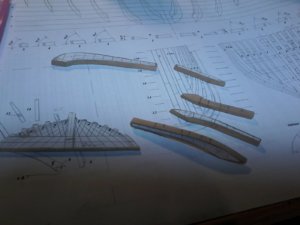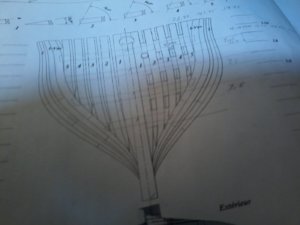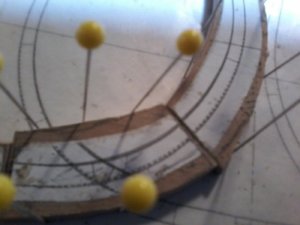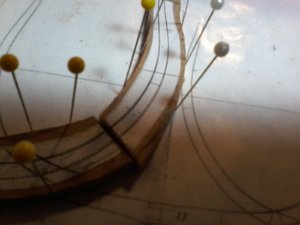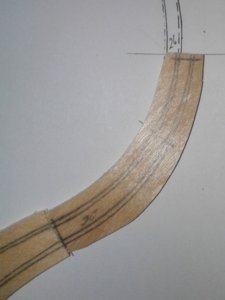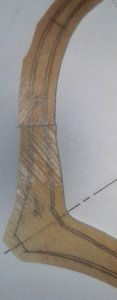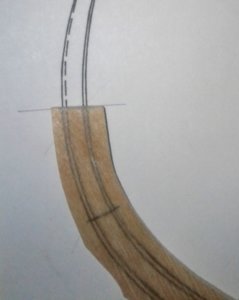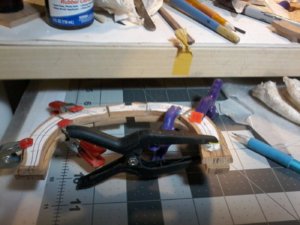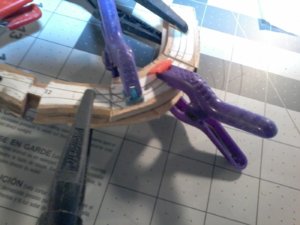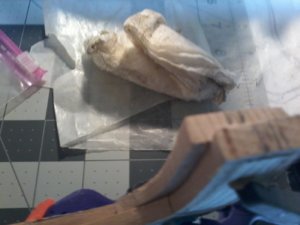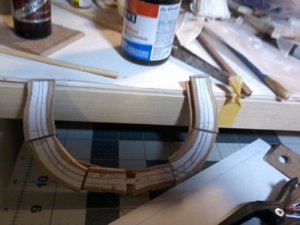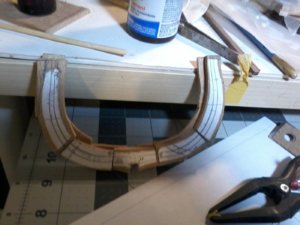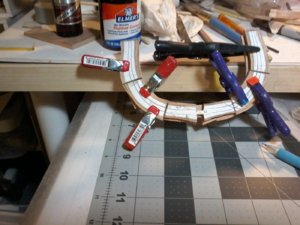- Joined
- Feb 18, 2019
- Messages
- 717
- Points
- 353

Don,
If you have the English version of the text from the monograph, please check the composition of the frames in the section dedicated to the explanation of each individual plate.
Plates 3 and 4 show all the frame patterns.
The explanation of these 2 plates should be grouped as 1 entry in the book. These explanations should cover a few things, including the orientation of the frames.
Another paragraph in the text on the page should cover the composition of the frames: describing the different parts of the frame by name, ie: floor-timbers, half floor-timers, futtocks, etc...
In regards to the most forward and aft frames, their composition is usually slightly different: for example the floor timber is called a half-crotch (2 of them) and the half floor-timbers are replaced by cross-chokes (1, 2 or 3 depending on how severe the V shape to the foot is: See HERE for a diagram and associated text (not Rochefort though): once you have clicked on the link, scroll down to page 77 and look at photo 5 showing an exploded view of the lower part or foot of the frames..
I suspect that the most forward and aft frame of Le Rochefort are built in a similar way. The information is contained on the plan.
Looking at the your last photo (frame 2), it seems that the foot of this frame is composed of 1 cross-choke (its location being on the bow side) and 2 half crotches (on the stern side of the frame).
Let us know what you find in the text and if the description makes sense.
G.
If you have the English version of the text from the monograph, please check the composition of the frames in the section dedicated to the explanation of each individual plate.
Plates 3 and 4 show all the frame patterns.
The explanation of these 2 plates should be grouped as 1 entry in the book. These explanations should cover a few things, including the orientation of the frames.
Another paragraph in the text on the page should cover the composition of the frames: describing the different parts of the frame by name, ie: floor-timbers, half floor-timers, futtocks, etc...
In regards to the most forward and aft frames, their composition is usually slightly different: for example the floor timber is called a half-crotch (2 of them) and the half floor-timbers are replaced by cross-chokes (1, 2 or 3 depending on how severe the V shape to the foot is: See HERE for a diagram and associated text (not Rochefort though): once you have clicked on the link, scroll down to page 77 and look at photo 5 showing an exploded view of the lower part or foot of the frames..
I suspect that the most forward and aft frame of Le Rochefort are built in a similar way. The information is contained on the plan.
Looking at the your last photo (frame 2), it seems that the foot of this frame is composed of 1 cross-choke (its location being on the bow side) and 2 half crotches (on the stern side of the frame).
Let us know what you find in the text and if the description makes sense.
G.




